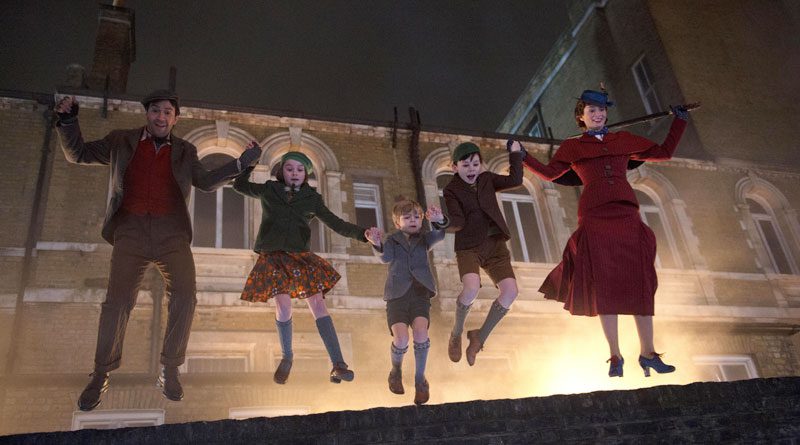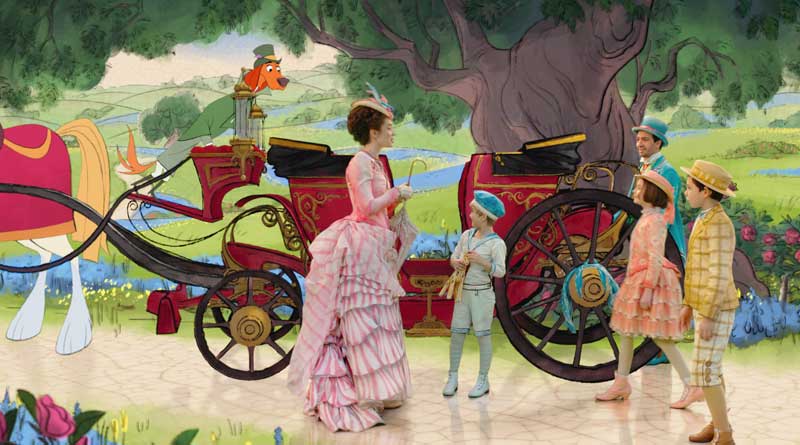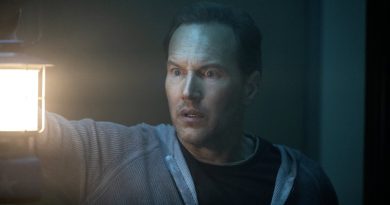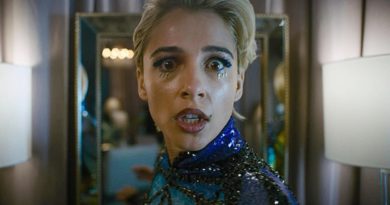Mary Poppins Returns (2018) Review
Believe it or not, it has been 54 years since the original Mary Poppins was first released back in 1964 to overwhelmingly positive responses. The acclaimed Disney musical was also a huge box-office hit and even earned a whopping 13 Oscar nominations including Best Picture and Best Director (both lost to George Cukor’s My Fair Lady, another famous musical released during that same year). But Mary Poppins did bring home five Oscars, particularly a memorable Best Actress win for then-28-year-old newcomer Julie Andrews. It was the title role that forever associated with the legendary British actress other than The Sound of Music.
Prior to the screening of Mary Poppins Returns, I went to watch the original movie for the first time after years of hesitation. For all the universal acclaims that I’ve read from various film magazines and online movie sites, the original Mary Poppins wasn’t as great as I thought. For the record, I do love the golden age of Hollywood movie musicals with the likes of The Sound of Music, An American in Paris and Singin’ in the Rain. But I found Mary Poppins was somewhat overrated that suffered from a flimsy plot stitched together just enough to form a feature-length musical. The only things that I enjoyed the most are Julie Andrews’ wonderful portrayal as the practically perfect title character as well as some of the memorable sing-a-long songs including “A Spoonful of Sugar” and the tongue-twisting “Supercalifragilisticexpialidocious”.
Back to Mary Poppins Returns, this eagerly-awaited sequel (depending on who you ask) brings back the magical nanny (Emily Blunt), as she returns to Cherry Tree Lane during the 1930s Depression-era of London and takes care of the now grown-up and recently widowed Michael Banks’ (Ben Whishaw) three children including Annabel (Pixie Davies), John (Nathanael Saleh) and Georgie (Joel Dawson).
It was no doubt an uphill task for anyone trying to replace the incomparable Julie Andrews, who immortalised the title role more than 50 years ago. But Emily Blunt, who reportedly did not watch the original Mary Poppins in preparation for her role, manages to make it her own. It was actually a wise decision that prevented her from copying Andrews’ version of the title character. As the new Mary Poppins, Blunt proves to be a worthy replacement after all. She displays enough playful charm and elegance to her role.

It’s kind of a pity that the rest of the actors are either mediocre or trying too hard to make an impression. This is especially true for Lin-Manuel Miranda, whose supporting role as the lamplighter Jack looks like as if he’s attempting to emulate Dick Van Dyke’s Bert character in the original Mary Poppins. He even went as far as faking the same bad cockney accent that used to become a running joke for Van Dyke back in the days. It makes me wonder why an acclaimed Broadway actor of Hamilton fame like Lin-Manuel Miranda seems desperately wanted to copy Dick Van Dyke’s role from the way he speaks right down to his mannerism. Both Ben Whishaw and Emily Mortimer, who plays Michael’s grown-up sister Jane, did what they can in their underwritten roles but hardly enough to make them worthwhile. Colin Firth shows up in a small role as William Weatherall Wilkins, who appears nothing more than your average family-friendly antagonist character. Only Meryl Streep manages to make the best out of her otherwise thankless cameo appearance as Topsy. Her singing performance on the cheeky “Turning Turtle” turns out to be among the highlight of the movie’s soundtrack.
Speaking of the soundtrack, most of the songs are either sounded like throwaway fillers or plain forgettable. For instance, Emily Blunt’s opening number “Can You Imagine That” is surprisingly flat, which somehow has to do with the actress’ lacklustre singing voice that sounds a little too rigid for her own good. “A Spoonful of Sugar”, this is not. This is actually a surprise, given the fact that Rob Marshall’s experience in directing movie musicals as previously seen in his Oscar-winning Chicago and to a certain extent, Nine.
David Magee’s adapted screenplay, taken from the late P.L. Travers’ stories of the same name, rehashes the same narrative beat of the 1964 original. Given Magee’s previous experience in adaptations including Finding Neverland (2004) and Life of Pi (2012), he could have done better than just resorting into a mere surface-level storytelling approach. Which is why it’s hard to feel emotionally invested with the Banks family’s personal and financial hardship over their impending house repossession.

From the technical point-of-view, Mary Poppins Returns is exquisitely shot on locations around London. John Myhre’s production design of the 1930s Depression-era London is vividly realised that seamlessly integrated with elaborate sets and CGI. Sandy Powell’s lavish costume design is also worthy of a praise here and I wouldn’t be surprised if she receives an Oscar nomination for her work. Marshall also pays tribute to the 1964 original by incorporating live action and classic 2D hand-drawn animation during the elaborate song-and-dance sequence, which is a nice touch of nostalgia.





